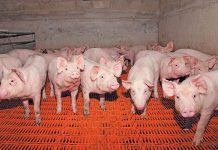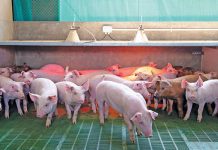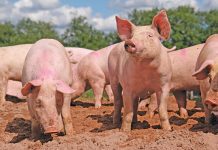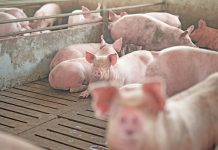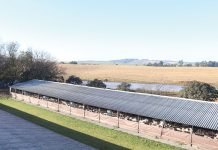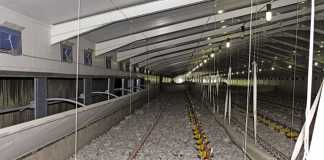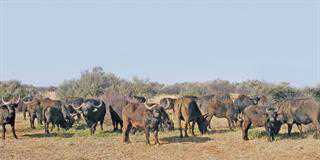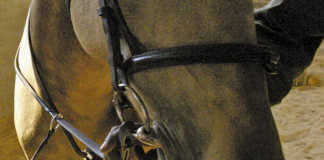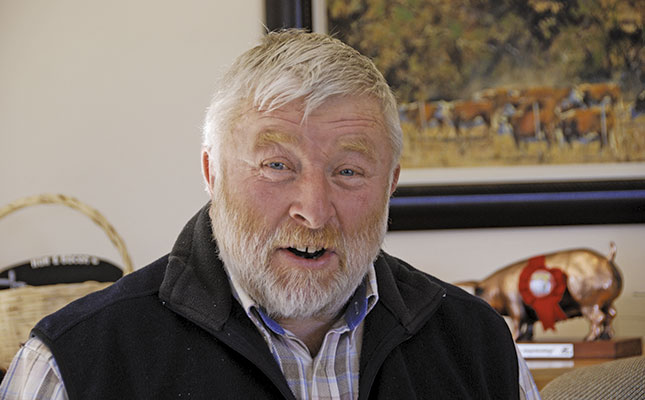
Photo: Heather Dugmore
Number Two Piggeries currently employs 1 000 people, including 60 managers, and manages one of South Africa’s most successful piggery businesses. It has piggeries all over South Africa, as well as one in Namibia, with a total of 20 000 breeding sows, representing more than 20% of national pork production.
READ: Building a piggery with patience & passion
The group also has its own abattoirs, with 25% of pork production in South Africa slaughtered there. This is a far cry from where David Osborne was 38 years ago when he first recognised that his future lay in farming.
Background
“I started farming in the Queenstown area in 1976 when I set up a piggery business and abattoir in partnership with Queenstown farmer David Miles. We did it on a handshake and we’re still partners and personal friends,” recalls David.
“The same goes for my other partners in the group, Philip von Memerty and Mark Schulpfort.”
The success of the first piggery business was based on whey, a by-product of cheese-making, which in the 1970s was regarded as a waste product in South Africa.
“Having worked on farms in England I knew that we could use whey to feed pigs. We sourced it from the local DairyBelle factory and piped it to the piggery,” says David. “This gave us a competitive advantage over other pork producers who were not using whey as a feed source at the time.”
Expansion
As their piggery grew, they sourced more whey and combined it with other foodstuffs, such as mayonnaise, noodles and maize meal.
READ: The success of People First Piggery co-operative
“You have to constantly be looking around the next corner to remain profitable in this business.
“In SA, pork has to be produced to international trading standards, therefore you have to be able to produce a better, cheaper local product than its imported counterparts from Brazil, Canada, Germany and Spain.
“This means looking at new technology and production methods all the time, which many of the smaller piggeries cannot afford.”

Number Two Piggeries has bought several piggeries from smaller-scale farmers, several of whom are now affiliates in the expanded business. The group has also pioneered new developments, the latest being the high-tech Chalala piggery between Malmesbury and Darling in the Western Cape.
The group bought two farms here, on which the brand-new R200 million piggery has been built, spanning 52 800 squared metres. Construction started in 2012 and it is now completed and productive, housing 4 800 sows. This number will be increased to 9 000 sows over the next couple of years.
A multi-site production unit, it also includes a breeding unit.
Production
At 28 days, the piglets are moved to a weaning unit for six weeks. They are then moved to the fattening unit for approximately 13 weeks. Each unit functions as a separate entity, with its own staff, operating procedures and biosecurity rules. The entire piggery is run by 20 staff members, compared with traditional piggeries, where about 20 staff members manage around 500 sows.
“This business is all about sustainability and cost reduction, including the feed conversion ratio,” David explains.
“Pig farms are measured by the amount of feed consumed to produce 1kg of meat. A decade ago, this ratio was 4kg of feed to produce 1kg of meat, but we’re down to 3,4kg and we can still go down to 3,2kg. This is a result of improvement in the quality of the feed and genetics.
“Today we still use whey, but it’s incorporated in professional, scientific feed formulations which have enabled us to make the value of the whey even more valuable,” he explains.
Electricity is a major cost, and one of the limiting factors for all pig farmers. David is looking into biogas as a future energy source for intensive livestock production.
This article was originally published in the 5 September 2014 issue of Farmers Weekly.


